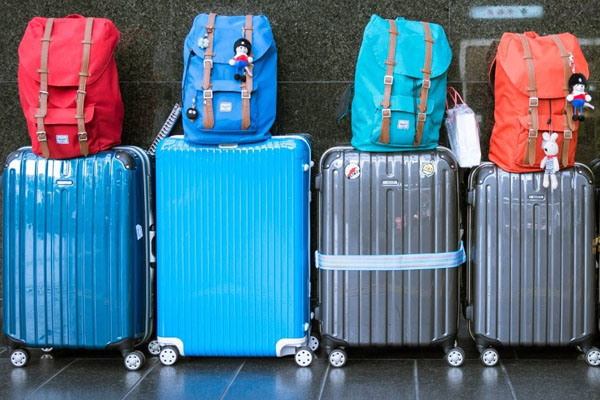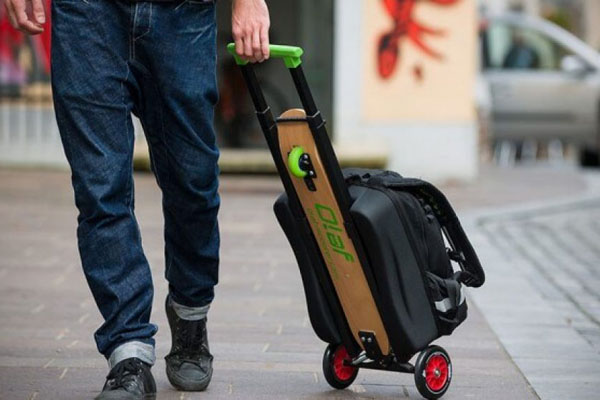Whether it is a personal trip or a trip for business, knowing how to properly pack and handle your luggage is vital. A trip to another city is by far different from a domestic or international trip that would require you to fly via plane. Why? This is because packing is more meticulous than that of a trip that doesn’t require flying.
If you have a flight coming up, it would be a good idea to learn how to measure your luggage. This is because airlines have guidelines on luggage. And believe me, the last thing you’d want is to be held up in checking in your luggage because of things that you shouldn’t have carried or carrying more than you should.

The Basics of Measuring Luggage
Let us help spare you from unnecessary excess baggage fee payments through these luggage packing and measuring concepts. Knowing these will make your trips smoother, easier, and less stressful.
Types of Luggage and Size Limits
To give you an idea of what measurements you are to go for, here are the different types of luggage and their usual recommended dimensions.
Personal Item
When we speak of a personal item, we are talking about a purse, a backpack, a tote, a small suitcase, or any type of storage material that can easily fit under the seat of the passenger in front of you. There are different types of flights and airlines, so the option to charge or waive the fee for this is entirely up to them.
But for most airlines who allow passengers to bring a personal item along with them free of charge, can use this as a guide for a personal item’s size requirement. It varies from one airline to another, but the usual range for width would fall on 6-9in, 10-14in height, and 17-18.5in length. While it is uncommon, some airlines may set a weight limit for personal items.
Carry-On
As for carry-on baggage, it can be similar to a personal item in the form of a backpack, a small suitcase, a tote, or any type of storage option. As long as it easily fits the overhead compartment, you are good to go. The usual size limit for this would usually be 13-15in height, 8-10in width, and 19-23 in length. This is where liquids are usually stored. Since most airlines allow up to 3.4oz, people are allowed to carry gels, aerosols, and liquids as long as they are well packed in a clear plastic bag.
Checked Luggage
Unlike carry-on and personal items, checked luggage cannot be carried into the plane by the passenger. This may be a large suitcase or item that is checked in before the flight at the airline. These are then transported to a storage that is inaccessible to passengers during the flight. For this type of luggage, airlines usually set a limit of 50-70 lbs in weight, 23-32 inches in length, and 62 linear inches. If you are not familiar with linear inches, we will be teaching you how to measure them as we go to the latter part of the article.
Now that you are familiar with the different types of luggage and their size limits, let’s proceed to the measurements. But do note that the sizes mentioned earlier are to be used as guidelines, it is still a better move to call the airlines directly to ask for their size limits as the values may vary from one airline to another.
Why Measure your Luggage
Measuring your baggage before going to the airport will spare you trouble before your flight. Since airlines have size restrictions, it would be good to measure them ahead and make sure they fall within the limit set by the airline you are to fly with. In this way, you won’t have to worry about getting rid of excess items or paying for excess baggage fees during check-in.
There are a lot of mistakes people make when measuring their luggage, hence, despite the effort to keep their luggage in check, they still end up paying fees because of incorrect measurements. So here is a couple of information that can get you accurate size measurements for your luggage.

Understand the Units
It is important to check with the airlines ahead as they have size guidelines for every type of luggage. They may also have their own guidelines in terms of centimeters or linear inches. When we speak of linear inches, we are talking about the total sum of a luggage’s dimensions. This will include its width, height, and length. So if we are to take an example, a bag that has a length of 20”, the width of 9”, and depth of 10”, the measurement in terms of linear inches for this one would be 39.
When measuring on linear inches, make sure to include the soft handles, wheels, and retracted handles when getting the width, depth, and height of the bag. Once you get those values, add them all together to come up with your luggage’s measurement in linear inches.
Things to Remember when Making Measurements
Bags, suitcases, and other types of storage materials may come with a tag containing their dimensions. These manufacturers’ dimensions cannot be used when measuring your luggage for flying. Why? This is because most of these dimensions do not factor in the presence of wheels, handles, and expandable width. Hence, you may end up paying extra fees because airlines have a different way of measuring your luggage.
Bag Extensions
The trend today allows people to utilize bag extensions. These are compartments that can easily be zipped and unzipped to their bag to accommodate their traveling and storage needs. While these may just add about an inch or two in your measurement, make sure to consider the weight and bulkiness of the things you are to store there as these may go beyond just one or two inches.
Bag or Suitcase Material
You may think that bags of different materials with similar dimensions are to have an even compartment size and measurement with things inside. The truth is that they won’t. This is because of the features of the material used to create the bag. For example, leather and nylon have the same thickness, but there are those that may be thinner. Some materials may be compact while some may be flexible. Hence, when you fill them up with things inside, they may end up blowing over into a bag of bigger dimensions.
Measuring the Weight
Regular Scale Measurement
For those who aren’t traveling much, they can opt to measure their luggage using a regular weighing scale. An effective method would be to stand on the scale with your luggage and check the value as it can be hard to read the values without standing on the scale. After that, stand on the scale and check your weight. Deduct your weight from your initial weight with the bag and you’ll have a rough estimate of how heavy it is.
Luggage Scale
This is a more convenient option for those who are traveling frequently. This investment can give you a more accurate value, all you have to do is place the luggage into the luggage scale strap and pick it up to a greater height. The results usually come in a value with two decimal points. This is a good choice because you can easily bring this anywhere with you for convenient luggage measuring.
Measuring the Width, Height, and Depth
Tape Measurement
Now that you know the weight of your luggage, it is time to measure its other dimensions such as width, height, and depth. This can be done by using a tape measure. You can easily purchase one to bring with you on your trip or to have one at home. Measuring these has a fairly easy concept.
To measure the height, simply start from the top to the bottom of the bag. To measure the width, measure from the left to the right, and to measure the depth, you have to measure it from front to back. Measurements are usually written in the format of height, width, and depth (HxWxD).
This sounds easy until you get a bag with wheels. While manufacturers do not include wheels in their measurements, airlines do. So when using a tape measure to measure a bag with the wheels’ height, try placing the bag against the wall and marking the topmost part of the bag with a pencil or marker. This will make it easier for you to measure it with a tape measure.
It is good to know that bags with wheels that can rotate 360°, also known as spinner luggage, have wider gaps because of the rotation of the wheels. This then takes more space than that of a typical 2-wheeled bag that has its wheels recessed or tucked further into the bag. It is important to accurately measure your luggage especially if it has wheels because you may end up paying unnecessary fees when you check-in.
Step-by-Step Guide
- Get your airline’s luggage size and weight requirements. Airlines may have varying requirements and limits on their personal item, carry-on, and checked in baggage. Make sure to confirm that the values you are to get are the latest and updated size and weight guidelines.
- Choose a bag that is ideal for each type of luggage. To save you time, you can proceed to measure the bag before filling it with your things to make sure it falls on the airline’s standards.
- Once you have come up with a choice, you can then proceed to packing. After filling it with your belongings, you can now proceed to measuring. Do note that it is best to measure it when the bag is completely filled as the measurements may be altered when filled with added objects.
- Make sure to include the zippers, bag compartments, handles, and wheels when doing so.
- Compute your bag’s linear inches by adding the values of your bag’s height, weight, and depth. Compare with the airline requirements and adjust as necessary.
- Once you compute the bag’s dimensions, you proceed to measure its weight. You can choose between the methods discussed above. So you can choose the scale of your choice and measure its weight. Again, you need to compare it to the airline’s requirements and adjust as necessary.
- It is important to know the size and weight limit for every type of luggage. This will allow you to plan your packing and storage style better.
Conclusion
Knowing that you are to travel and experience being on a trip to another place and destination is definitely exhilarating. As a wise traveler, you have to prepare ahead and pack smart to make sure your trip is smooth sailing. But with all the horror stories you heard from people who were held up while checking in their luggage, you would want to make sure that you do not experience the same thing.
Hence, we have laid out all the basics about luggage measurements. From the types of luggage and the size limits that usually come with them to the methods and proper execution of measurements, your comfort and experience is now in your hands.




